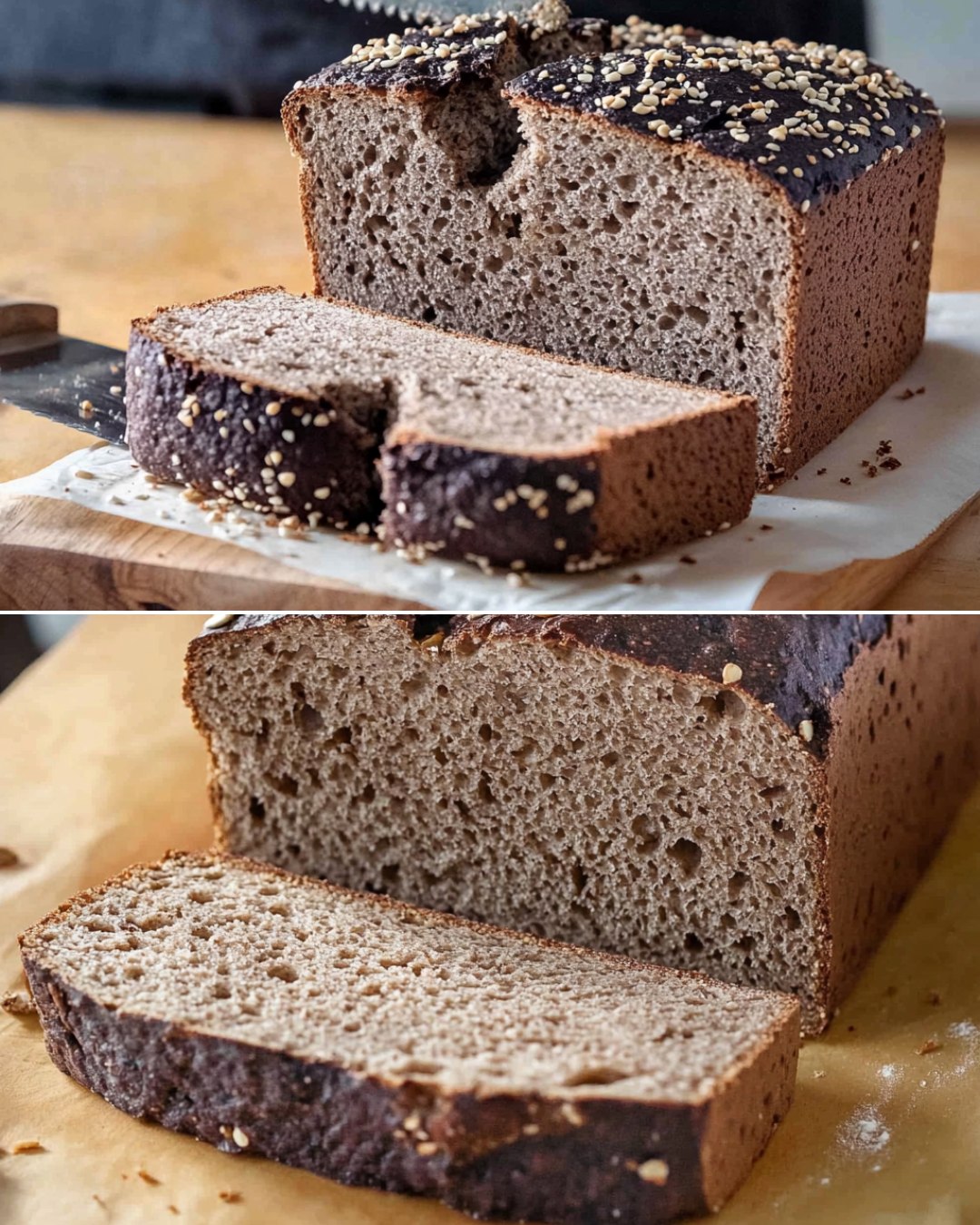ADVERTISEMENT
Title: Homemade Fermented Buckwheat Bread: The Simple Gluten-Free Delight
If you’re a fan of hearty, wholesome bread but need to avoid gluten, fermented buckwheat bread is your perfect solution. Not only is it naturally gluten-free, but it’s made with just one simple ingredient—buckwheat flour. Fermenting the dough adds an extra dimension of flavor, making it slightly tangy and incredibly nutritious. Best of all, it’s easy to make at home with minimal ingredients and no complicated processes.
Buckwheat is a wonderfully nutritious alternative to wheat flour. It’s rich in fiber, protein, and essential minerals like magnesium, making it a fantastic choice for those with gluten sensitivities or anyone looking to add variety to their bread collection. The fermentation process enhances the bread’s flavor and digestibility, giving it a delightful texture and a mild sourness that makes each bite special.
In this article, we’ll show you how to make your own fermented buckwheat bread with just buckwheat flour. It’s simple, nutritious, and a game-changer for your gluten-free baking repertoire!
Why Choose Fermented Buckwheat Bread?
- Gluten-Free: This bread is naturally gluten-free, making it perfect for those with celiac disease or gluten intolerance.
- Simple Ingredients: With only one ingredient—buckwheat flour—and the magic of fermentation, you can enjoy bread that’s free from additives and preservatives.
- Nutritious: Buckwheat is packed with essential nutrients, including protein, fiber, and antioxidants. It also contains beneficial minerals like manganese and copper.
- Easy to Make: The process is simple and requires no fancy equipment. All you need is time to let the dough ferment and develop its delicious flavor.
The Science of Fermentation
Fermentation is an age-old process that has been used for centuries to preserve food and enhance its flavors. When making bread, fermentation occurs when natural bacteria (lactic acid bacteria) feed on the starches in the flour, producing lactic acid. This creates a slightly sour, tangy flavor while also improving the bread’s texture and digestibility. The fermentation process also helps to break down gluten, making it easier on the stomach, even in gluten-free recipes like this one.
In this recipe, fermenting the buckwheat flour with water creates a dough that rises slightly over time, leading to a bread that’s soft, slightly chewy, and deliciously flavorful.
Ingredients You’ll Need
- 1 cup buckwheat flour (make sure it’s pure, as some “buckwheat flour” blends may contain gluten)
- Water (enough to form a thick dough, approximately 1/2 cup to 3/4 cup)
How to Make Fermented Buckwheat Bread
Step 1: Make the Dough
Start by combining the buckwheat flour and water in a mixing bowl. The amount of water you use may vary slightly, so begin with 1/2 cup and add more as needed to achieve a thick, sticky dough. Stir until the dough is well mixed, and make sure there are no dry patches of flour. The dough should hold together but be slightly wet and tacky.
Step 2: Ferment the Dough
Cover the bowl with a clean cloth or plastic wrap and let it sit at room temperature for 12-24 hours. The longer you allow it to ferment, the more sour and complex the flavor will become. During this time, natural fermentation will occur, and you should see small bubbles form in the dough, indicating that the bacteria are at work.
If you’re short on time, you can ferment the dough for as little as 12 hours, but a full 24 hours will give you the best flavor and texture.
For Complete Cooking STEPS Please Head On Over To Next Page Or Open button (>) and don’t forget to SHARE with your Facebook friends
